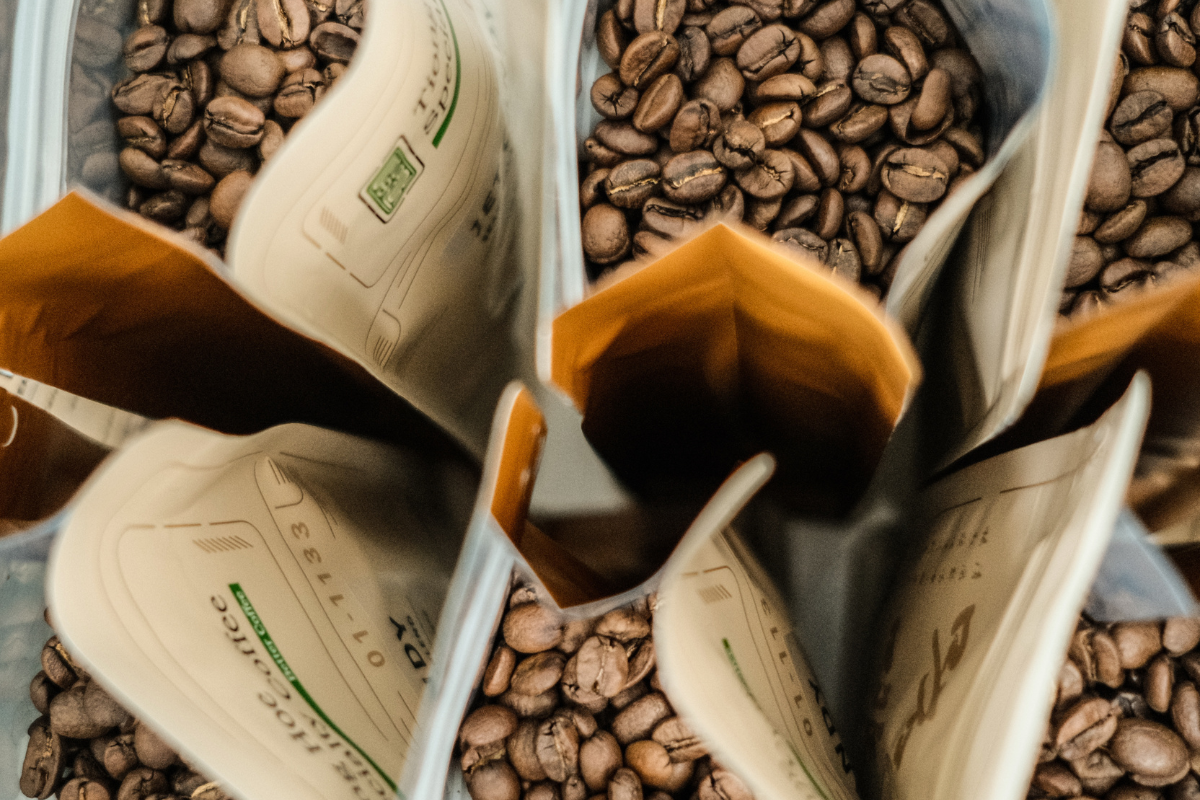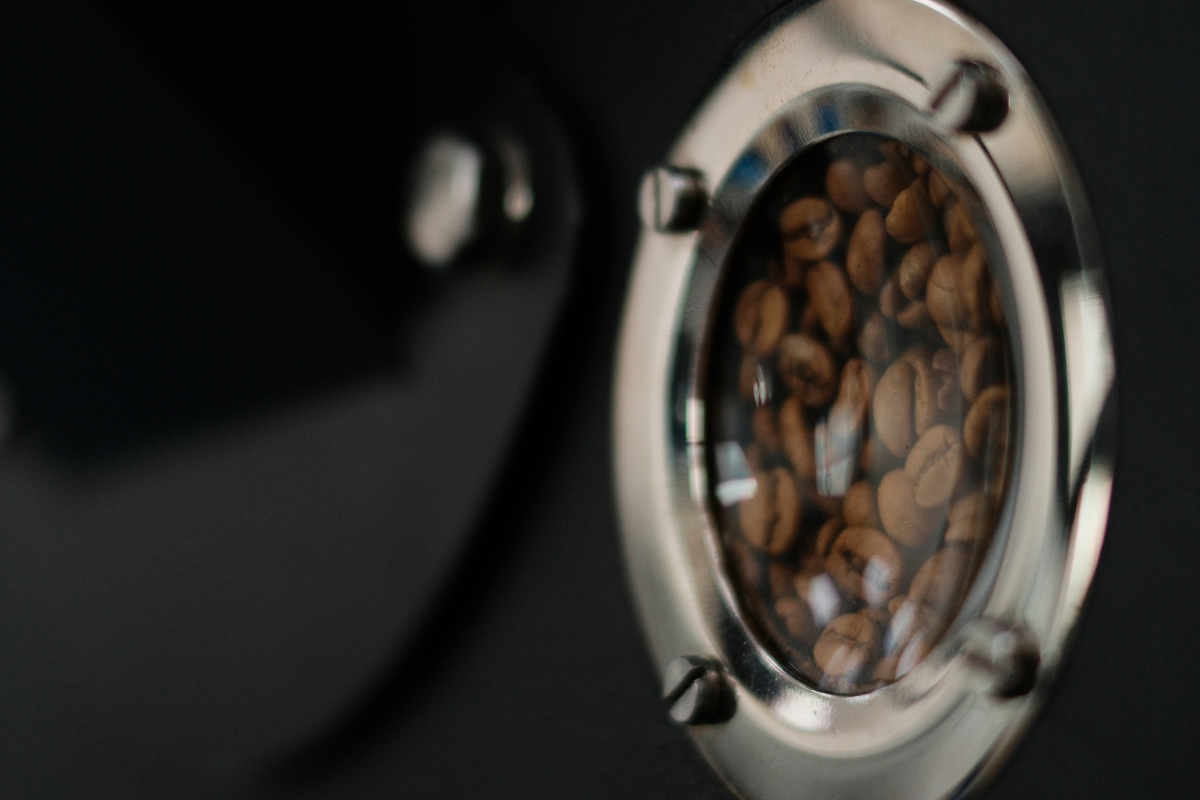Walking into a cafe or browsing an online store can sometimes feel like standing in front of a giant wall of choices. You see names like Gachala, Mogiana, and Ethiopia Haru Suke. You read terms like “Washed Process,” “Medium-bodied,” and “Notes of Gula Melaka.” It’s exciting, but it can also be a little overwhelming. Finding the right coffee for you or for a friend/colleague/loved one shouldn’t be a puzzle, it should be a joy.
That’s what this guide is all about. We want to show you just how easy it is to read our coffee labels. We'll walk you through everything you need to know to confidently pick a coffee that is very close to your preference.
It All Starts with the Label
All the clues you need to find your ideal brew are sitting right on the front of the coffee bag. We’ve designed our labels to give you a complete picture of the coffee inside. Let’s look at the key parts together.

1. Coffee Name
In this section, we have our coffee name in the Espresso Roast, and we have the producer/farm name and country for the Filter Roast. This can be helpful if you’re looking for coffees from specific countries and/or producers.
2. Roast Profile: Espresso vs Filter Roast

- Espresso Roast: Identified by a portafilter symbol (the handle an espresso machine uses, left of Figure 2). These beans are roasted to be soluble for espresso extraction, perfect for your home espresso machine or a Moka Pot. They are also great for a full-bodied French Press, or a milky cold brew.
- Filter Roast: Identified by a V60-style dripper symbol (right of Figure 2). These beans are roasted lighter to preserve the bright, delicate, and complex flavours of the coffee's origin, ideal for methods like pour-over, Aeropress, Siphon, Drip Machine, or a black cold brew.

Figure 3. Other Symbols used
You might also see special versions of these symbols, like a filled-in cone or a portafilter with a small mountain on top as seen in Figure 3. These simply mean that you’re looking at one of our Premium or Special selection beans! These symbols are also used on our retail bags.
3. The "Story" of the Coffee (Origin, Varietal, Process)
On the left side of our labels, you'll find information about the coffee. For our Espresso Roast (left of Figure 1), you'll see:
- Blend of: The composition of coffee beans we used in the espresso blend.
- Acidity Level: The level of acidity the coffee, dependent on the beans used in the blend.
- Good for: What we believe might be the best brewing methods for the beans.
And for our Filter Roast (right of Figure 2), you'll find:
- Region: This tells you where in the world the coffee came from, like Minas Gerais in Brazil or Yirgacheffe in Ethiopia.
- Varietal: This is the specific variety of the coffee plant, like Bourbon or Catuai. Think of it like the difference between grape varieties for wine, such as Merlot or Pinot Noir. It can be useful if you're looking for a specific type, like a Gesha.
- Process: This refers to the method used to process the coffee cherry, such as Natural, Washed, or Anaerobic Fermentation. Each method imparts a different character, washed coffees often taste "cleaner", while natural-processed coffees can be fruitier.
4. Understanding the Taste Notes (Aroma, Flavour, Body, Aftertaste)
On the right for both our Espresso Roast and Filter Roast in Figure 1, we break down the sensory experience:
- Aroma: What you'll smell when the coffee is hot.
- Flavour: The primary acidity and sweetness you'll taste.
- Body: This describes the weight and texture of the coffee on your tongue - is it "Light-bodied" and "Silky" or "Heavy-bodied" and "Creamy"?
- Aftertaste: The pleasant, lingering flavors after you take a sip, such as "Chocolate-y" or "Roasted Nuts".
It is important to know that these are not artificial flavourings. They are the natural notes that comes from the coffee's origin, varietal, processing, and our unique roasting profile.

Figure 4. Colors used in the Symbols
Pro Tip: Look at the colour of the symbol on the labels! We colour-code it to give you a hint about the flavours inside. For instance, if a coffee has notes of red fruits, the symbol will be red. A coffee with purple fruit notes like Grapes, Currants and Tomatoes like the Kenyan coffee in Figure 4, will have a purple symbol.
So, Which Coffee Is Right for You?
Let's get you matched with the perfect bag. It just takes three simple steps.
Step 1: How Do You Brew at Home?
Start with your favourite brewing method. While there are no hard rules, here are our general recommendations:
- If you use an Espresso Machine, Moka Pot, or make milky cold brews: Start with our Espresso Roasts. They’re designed to produce a rich, balanced, and full-bodied cup with these methods.
- If you use a Pour-over, Aeropress, French Press, Siphon, Drip Machine, or make black cold brews: Our Filter Roasts will shine here, showcasing their bright and nuanced flavour profiles.
Of course, feel free to experiment! If you love a really heavy French Press, using an Espresso Roast can be a delicious choice.
Step 2: What Flavours Do You Enjoy?
Next, think about the tastes you generally prefer. Do you like nutty, chocolatey notes, or are you more into fruity and floral flavours? We sort our filter coffees into four handy categories to help you choose:
- Nutty & Chocolatey: These coffees have a comforting, classic profile with lower acidity. If this sounds like you, the Brazil Mogiana with its notes of roasted nuts and chocolate is a perfect choice.
- Sweet & Balanced: These are our crowd-pleasers! With medium acidity, they offer a beautiful balance of sweetness and gentle fruit notes.
- Floral & Fruity: For those who love a brighter, more vibrant cup. These coffees typically have high acidity.
- Premium/Special: These coffees often have higher acidity and flavour profiles that are not commonly found.
If you're unsure, just pick the one with flavour notes that sound the most exciting to you!
Step 3: How Much Coffee Do You Need?
Our coffee is sold in 200g or 250g bags, with 1kg options available online for our Espresso Roast. We roast-to-order for all online purchases, so it arrives at your door fresh. For the best flavour, we recommend letting the beans rest for at least 7 days after the roast date and enjoying them within a month.
Here’s a quick calculation: If you use 15g of coffee for one cup, a 200g bag will make you about 12-13 cups of coffee. If you drink one cup a day, two bags are usually perfect for a month's supply.
Recommedations
If you’d still like a direct recommendation, here are a few of our go-to suggestions:
- For the Classic Lover: You can't go wrong with a low-acidity coffee like our Brazil Mogiana, Indonesia Nismara Singaraja, or India Monsooned Malabar
- For the Adventurous: We suggest starting with a coffee from our Sweet | Balanced category. It’s the perfect bridge into the exciting world of brighter, fruit-forward coffees.
- For the Espresso Drinkers: We recommend starting with our Smoky Quartz blend for a classic, bold cup, then progressing to the Gachala blend for a slightly brighter, more complex espresso shot.
Ready to Find Your Brew?
We hope this guide makes your next coffee purchase an exciting and easy one. The most important thing is to have fun and explore the incredible world of flavours that coffee has to offer. If you're still unsure of what to get for your friend/colleague/loved one, check out this guide!
Browse our full selection of freshly roasted beans on our e-commerce store, we roast-to-order and offer free delivery for all orders $75 and above. We also have a reward system where you'll be rewarded for purchases made on our online store. For more information about our fulfillment schedule for online orders and rewards, find out here.
Or, you could pop by one of our retail outlets to say hello! We're always happy to chat about coffee and can even grind our coffee beans for you. Happy brewing!




Leave a comment
All comments are moderated before being published.
This site is protected by hCaptcha and the hCaptcha Privacy Policy and Terms of Service apply.